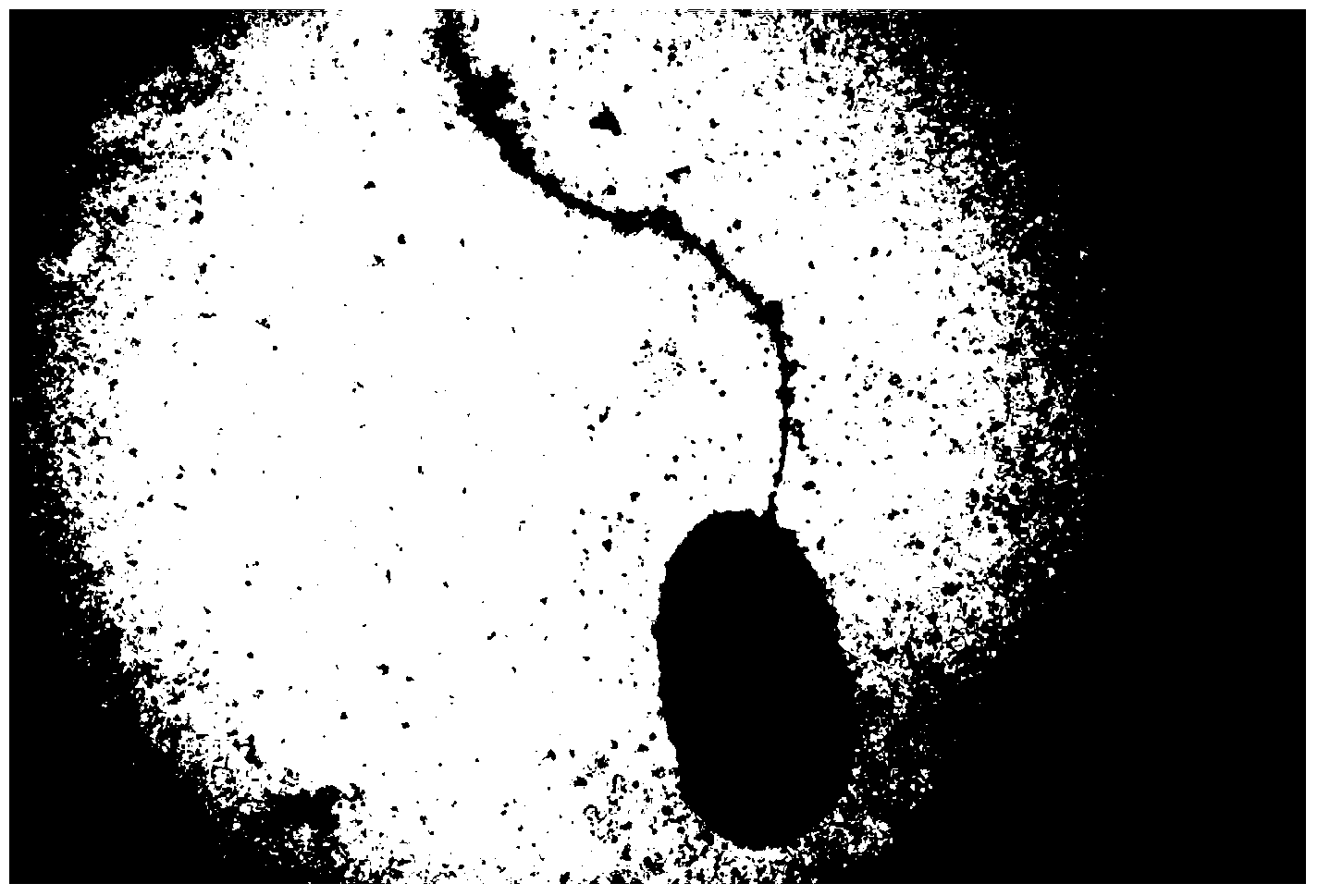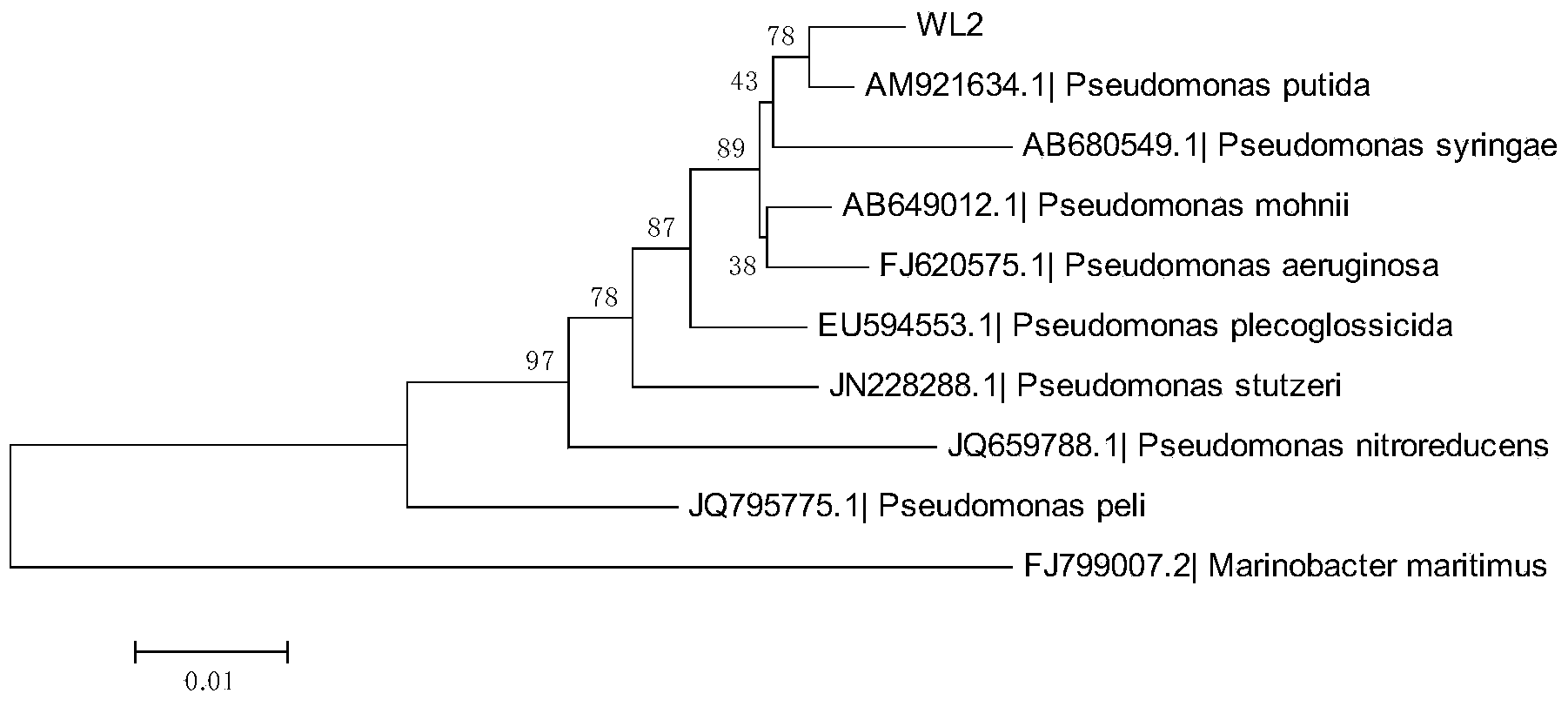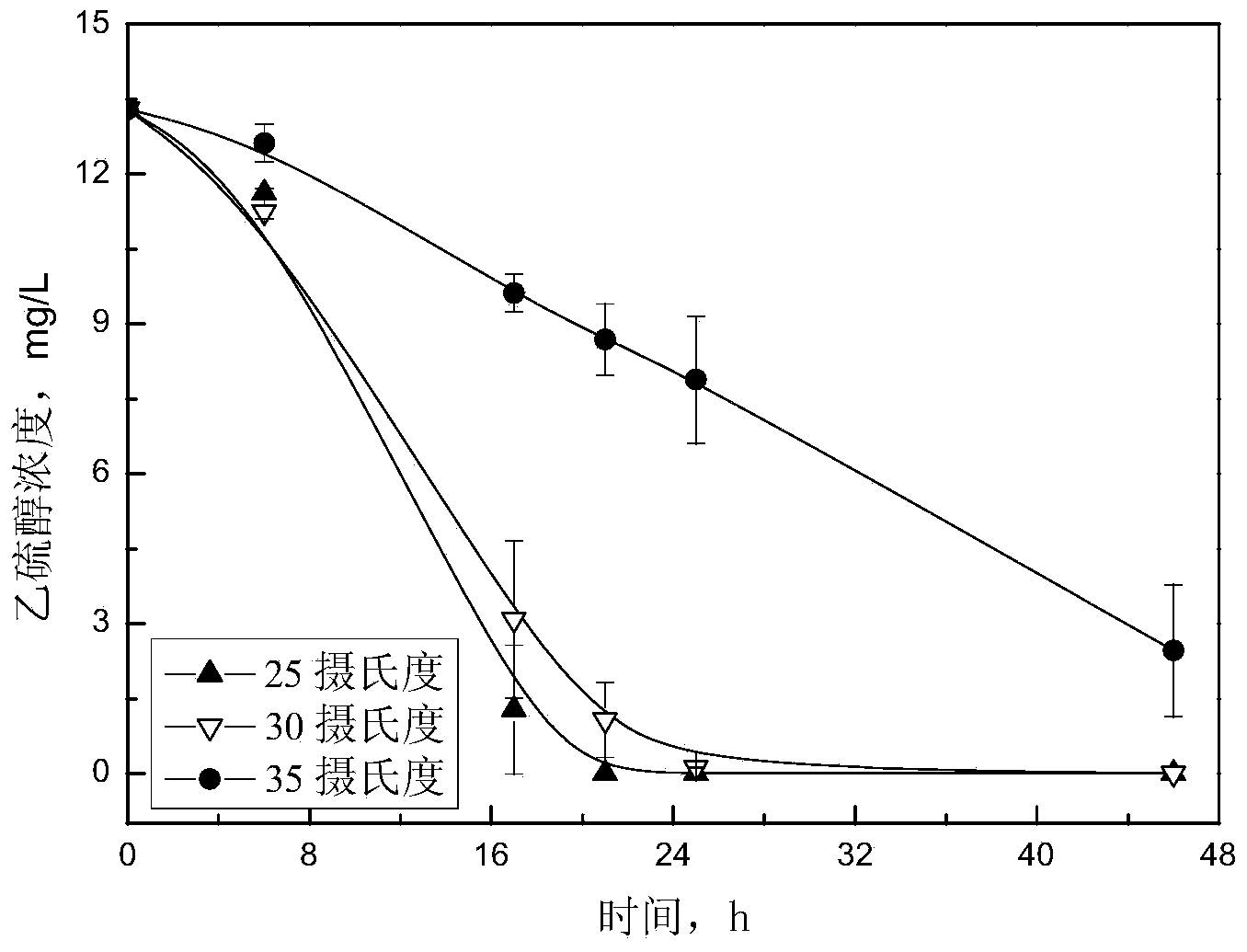Stain for degrading ethanethiol, as well as culture method and application of strain
A culture method, ethanethiol technology, applied in the direction of microorganism-based methods, separation methods, chemical instruments and methods, etc., can solve the problems of low removal rate, isolation, identification, analysis and application value of bacterial strains and degradation characteristics, etc. To achieve the effect of efficient degradation
- Summary
- Abstract
- Description
- Claims
- Application Information
AI Technical Summary
Problems solved by technology
Method used
Image
Examples
Embodiment 1
[0044] Embodiment 1: Isolation and identification of bacterial strains:
[0045] 1. Domestication and breeding of strains
[0046]Activated sludge taken from the sewage outlet of a pharmaceutical factory (in September 2012, Xinchang Pharmaceutical Factory of Zhejiang Pharmaceutical Co., Ltd. located in Xinchang County, Zhejiang Province) was exposed to the target pollutant (ethanethiol) into the activated sludge. After the air acclimatization is stable (at least 1 month), use a 300mL culture bottle in a constant temperature shaker, add 1mL of activated sludge, 50mL of inorganic salt medium and 10-20μL of target pollutants, and enrich for several cycles (3-5 times) to obtain microbial communities that can degrade the target pollutants; use R2A solid medium (10-fold dilution coating method, streaking method) to purify and isolate degradable strains, that is, to divide the microbial communities by 10 times with sterile deionized water Dilution method for serial dilution, take 10...
Embodiment 2
[0056] Example 2: Degradation properties of Pseudomonas sp. WL2
[0057] 1. Degradation characteristics of Pseudomonas sp. WL2 under different temperature conditions (25-35°C):
[0058] Using ethanethiol as the sole carbon source of Pseudomonas sp. WL2, inoculate 3mL logarithmic phase bacterial suspension (OD 600nm =0.115) in 100mL inorganic salt medium (initial pH=6.7) and placed in a 630mL sealed culture bottle (two parallel samples and one blank control group were designed under each temperature condition), and ethanethiol was added to make the initial pH in the system The concentration is 13.5mg / L, respectively placed in 25, 30, 35 ℃, 150r / min constant temperature shaker for continuous culture, sampling and analysis at regular intervals (the results are as follows image 3 ). This embodiment illustrates that when the initial concentration of ethanethiol is 13.5mg / L, the degradation characteristics when the temperature is 25°C are significantly better than 25°C and 35°C; ...
PUM
| Property | Measurement | Unit |
|---|---|---|
| Diameter | aaaaa | aaaaa |
Abstract
Description
Claims
Application Information
 Login to View More
Login to View More - R&D
- Intellectual Property
- Life Sciences
- Materials
- Tech Scout
- Unparalleled Data Quality
- Higher Quality Content
- 60% Fewer Hallucinations
Browse by: Latest US Patents, China's latest patents, Technical Efficacy Thesaurus, Application Domain, Technology Topic, Popular Technical Reports.
© 2025 PatSnap. All rights reserved.Legal|Privacy policy|Modern Slavery Act Transparency Statement|Sitemap|About US| Contact US: help@patsnap.com



